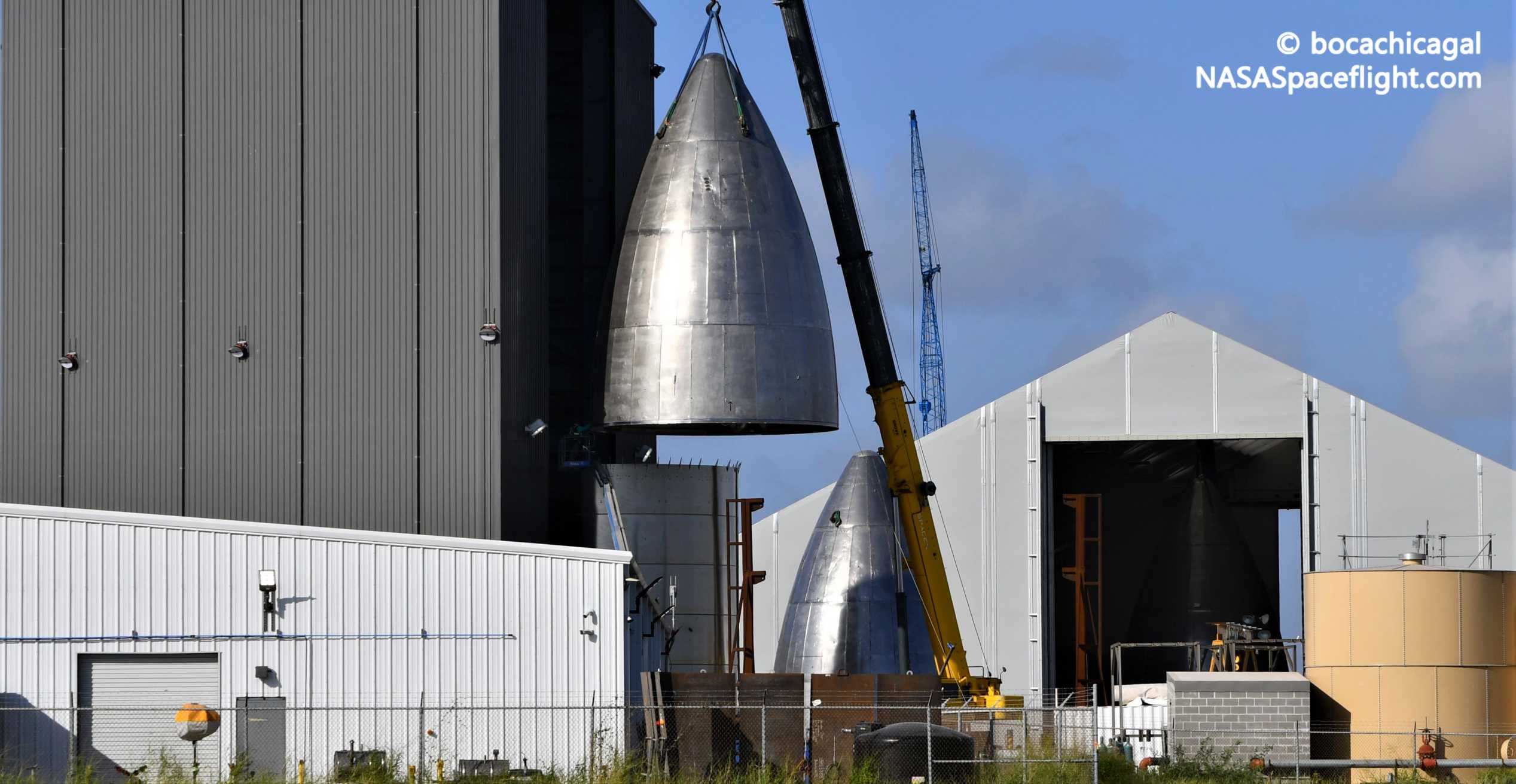
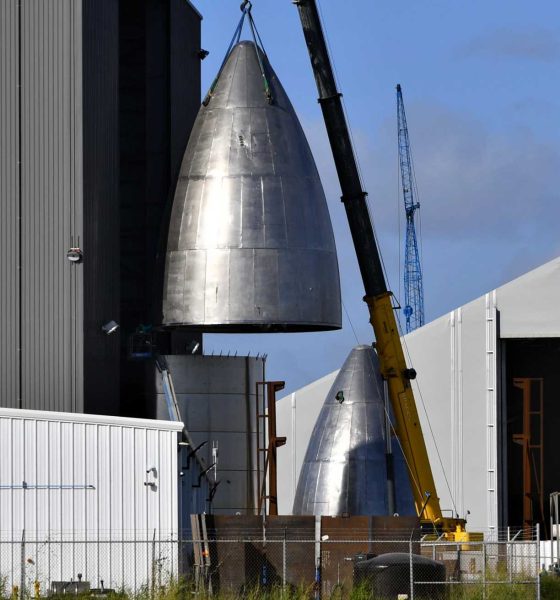
News
SpaceX stacks Starship nose section for the first time in months
SpaceX has stacked a Starship nosecone section to its full height for the first time in almost a year, featuring an upgraded design that could soon support an ambitious series of flight tests.
Back in August 2019, SpaceX first began stacking the nose section of Starship Mk1 – the first full-scale prototype of any kind. It became clear a few months later that Starship Mk1 was more of a rough proof of concept than a full-fidelity test article, but it still became the first (and only, so far) Starship to reach its full ~50m (~160 ft) height. After serving as a centerpiece during CEO Elon Musk’s September 2019 Starship presentation, SpaceX removed the nose and attempted to test the Mk1 tank section itself, ultimately destroying the ship.
Now eight months distant from Mk1’s demise, SpaceX’s Starship R&D program has entered the prototype mass-production phase. Since January 2020, SpaceX has built five upgraded Starship tank sections (and tested three to destruction), built and tested four stout test tanks, and completed at least 4-5 new nosecone prototypes. For the first time since nosecone production began several months ago, one of the noses has finally been stacked to its full height atop five steel rings.
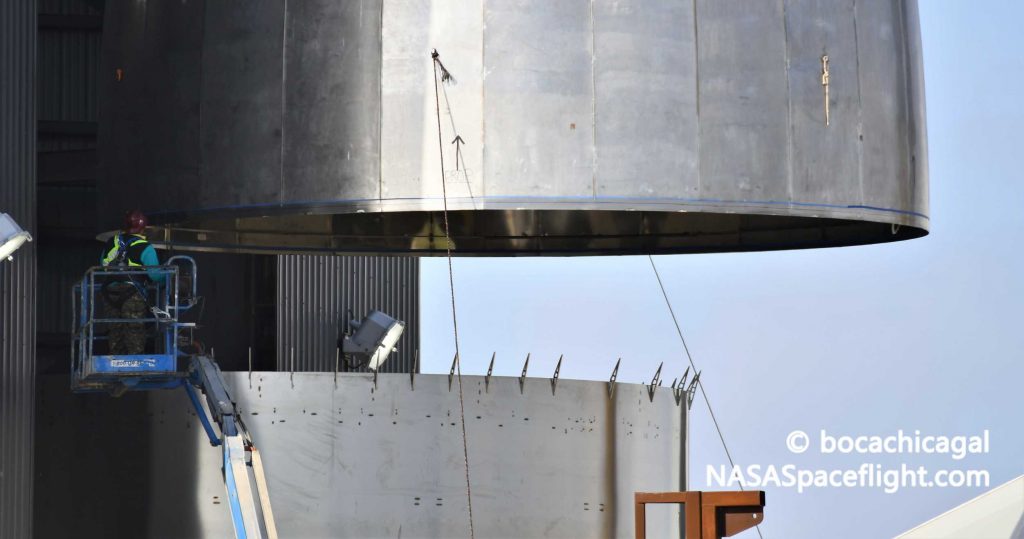
At the moment, SpaceX is hard at work preparing Starship SN5 for its first wet dress rehearsals (WDRs) with methane and oxygen propellant and either one or several Raptor engine static fire tests. If successful, SpaceX will quickly move to flight test preparations, readying SN5 for a nominal ~150m (~500 ft) hop, though the company is technically no longer restricted to that ceiling. For such a low-altitude test, aerodynamic features like a nosecone or flaps serve no functional purpose, meaning that SN5 is unlikely to ever receive those additions.
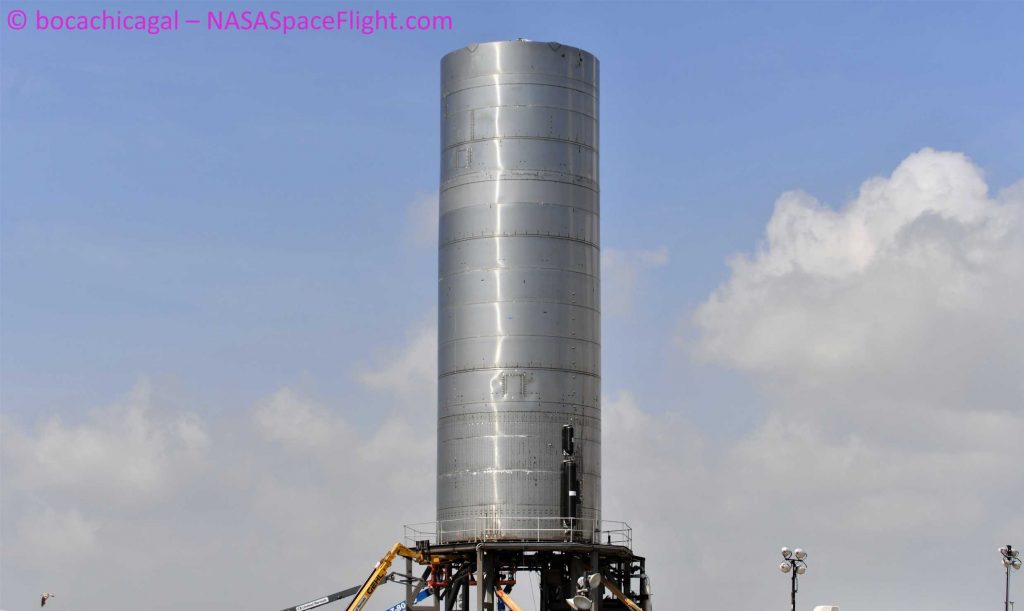
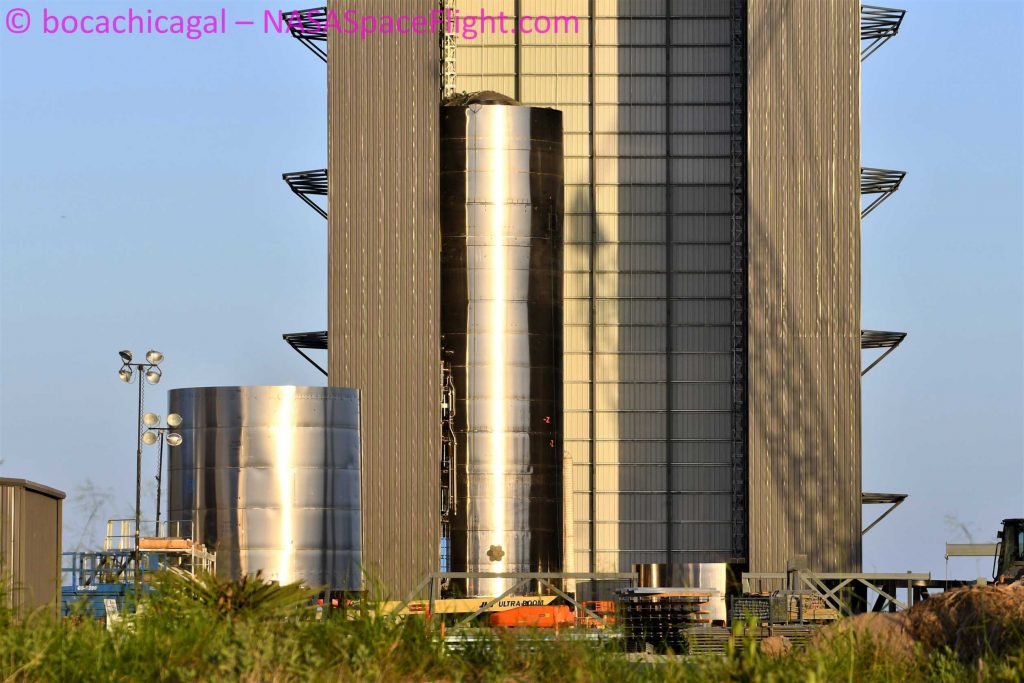
Roughly two miles west of the coastal launch and test site SN5 is stationed at, SpaceX has already more or less finished Starship SN6, although the newest ship’s fate is unclear. Pictured above on July 10th, the task of stacking an even newer ship (likely SN8) may already be underway. Last month, SpaceX tested a new ‘test tank’ built out of a different steel alloy said by CEO Elon Musk to be theoretically superior. Two cryogenic pressure tests seemingly confirmed that suspicion, proving that 304L stainless steel fails more gracefully than 301 while still offering similar strength at the pressures Starships operate at. The SN7 test tank was built and tested around the same time as SpaceX was finishing up SN6, implying that the ship was almost certainly built out of 301 steel.
If 304L really is the way forward for future Starship prototypes, the next step will be building an entire ship out of the steel alloy and performing a full cryogenic proof test and wet dress rehearsal. Given that SN5 and SN6 are likely identical (or nearly so), SN6 may have been made redundant before the ship even left the factory floor.
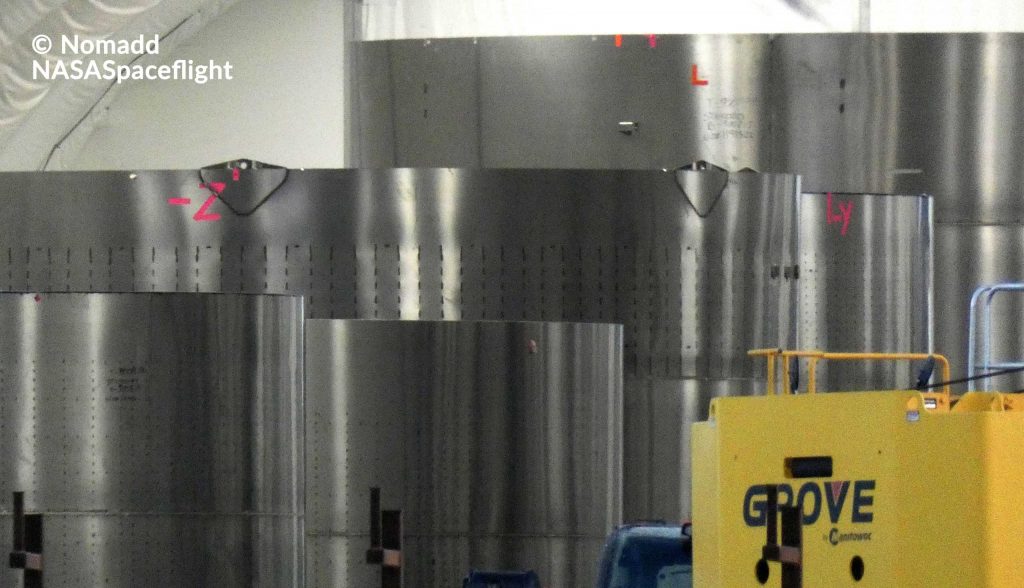
This is all to say that it’s a bit of a mystery where the first upgraded nosecone will find itself in the coming weeks. Like SN6 or SN7, it could either be redundant on arrival, built as practice, or both. It could also be the first nosecone installed on a flightworthy Starship prototype. It’s unlikely but not impossible that SN5 survives its static fires and first hops and is modified to support three Raptors and aerodynamic control surfaces, while SN8 and SN9 are more probable candidates for the first high-altitude, high-velocity test flight(s). SpaceX has at least 3-5 more Starship nosecones strewn about its Boca Chica factory, though, so odds are good that the first new nose section to reach full height won’t be the first to take flight.
For now, Starship SN5 (sans nose) is scheduled to attempt its first wet dress rehearsal (WDR) no earlier than July 16th. If successful, a static fire could follow a few days after that and a hop test another few days later.
Check out Teslarati’s Marketplace! We offer Tesla accessories, including for the Tesla Cybertruck and Tesla Model 3.

Elon Musk
Elon Musk confirms xAI’s purchase of five 380 MW natural gas turbines
The deal, which was confirmed by Musk on X, highlights xAI’s effort to aggressively scale its operations.

xAI, Elon Musk’s artificial intelligence startup, has purchased five additional 380 MW natural gas turbines from South Korea’s Doosan Enerbility to power its growing supercomputer clusters.
The deal, which was confirmed by Musk on X, highlights xAI’s effort to aggressively scale its operations.
xAI’s turbine deal details
News of xAI’s new turbines was shared on social media platform X, with user @SemiAnalysis_ stating that the turbines were produced by South Korea’s Doosan Enerbility. As noted in an Asian Business Daily report, Doosan Enerbility announced last October that it signed a contract to supply two 380 MW gas turbines for a major U.S. tech company. Doosan later noted in December that it secured an order for three more 380 MW gas turbines.
As per the X user, the gas turbines would power an additional 600,000+ GB200 NVL72 equivalent size cluster. This should make xAI’s facilities among the largest in the world. In a reply, Elon Musk confirmed that xAI did purchase the turbines. “True,” Musk wrote in a post on X.
xAI’s ambitions
Recent reports have indicated that xAI closed an upsized $20 billion Series E funding round, exceeding the initial $15 billion target to fuel rapid infrastructure scaling and AI product development. The funding, as per the AI startup, “will accelerate our world-leading infrastructure buildout, enable the rapid development and deployment of transformative AI products.”
The company also teased the rollout of its upcoming frontier AI model. “Looking ahead, Grok 5 is currently in training, and we are focused on launching innovative new consumer and enterprise products that harness the power of Grok, Colossus, and 𝕏 to transform how we live, work, and play,” xAI wrote in a post on its website.
Elon Musk
Elon Musk’s xAI closes upsized $20B Series E funding round
xAI announced the investment round in a post on its official website.

xAI has closed an upsized $20 billion Series E funding round, exceeding the initial $15 billion target to fuel rapid infrastructure scaling and AI product development.
xAI announced the investment round in a post on its official website.
A $20 billion Series E round
As noted by the artificial intelligence startup in its post, the Series E funding round attracted a diverse group of investors, including Valor Equity Partners, Stepstone Group, Fidelity Management & Research Company, Qatar Investment Authority, MGX, and Baron Capital Group, among others.
Strategic partners NVIDIA and Cisco Investments also continued support for building the world’s largest GPU clusters.
As xAI stated, “This financing will accelerate our world-leading infrastructure buildout, enable the rapid development and deployment of transformative AI products reaching billions of users, and fuel groundbreaking research advancing xAI’s core mission: Understanding the Universe.”
xAI’s core mission
Th Series E funding builds on xAI’s previous rounds, powering Grok advancements and massive compute expansions like the Memphis supercluster. The upsized demand reflects growing recognition of xAI’s potential in frontier AI.
xAI also highlighted several of its breakthroughs in 2025, from the buildout of Colossus I and II, which ended with over 1 million H100 GPU equivalents, and the rollout of the Grok 4 Series, Grok Voice, and Grok Imagine, among others. The company also confirmed that work is already underway to train the flagship large language model’s next iteration, Grok 5.
“Looking ahead, Grok 5 is currently in training, and we are focused on launching innovative new consumer and enterprise products that harness the power of Grok, Colossus, and 𝕏 to transform how we live, work, and play,” xAI wrote.
Investor's Corner
Tesla gets price target bump, citing growing lead in self-driving

Tesla (NASDAQ: TSLA) stock received a price target update from Pierre Ferragu of Wall Street firm New Street Research, citing the company’s growing lead in self-driving and autonomy.
On Tuesday, Ferragu bumped his price target from $520 to $600, stating that the consensus from the Consumer Electronics Show in Las Vegas was that Tesla’s lead in autonomy has been sustained, is growing, and sits at a multiple-year lead over its competitors.
CES 2026 validates Tesla’s FSD strategy, but there’s a big lag for rivals: analyst
“The signal from Vegas is loud and clear,” the analyst writes. “The industry isn’t catching up to Tesla; it is actively validating Tesla’s strategy…just with a 12-year lag.”
The note shows that the company’s prowess in vehicle autonomy is being solidified by lagging competitors that claim to have the best method. The only problem is that Tesla’s Vision-based approach, which it adopted back in 2022 with the Model 3 and Model Y initially, has been proven to be more effective than competitors’ approach, which utilizes other technology, such as LiDAR and sensors.
Currently, Tesla shares are sitting at around $433, as the company’s stock price closed at $432.96 on Tuesday afternoon.
Ferragu’s consensus on Tesla shares echoes that of other Wall Street analysts who are bullish on the company’s stock and position within the AI, autonomy, and robotics sector.
Dan Ives of Wedbush wrote in a note in mid-December that he anticipates Tesla having a massive 2026, and could reach a $3 trillion valuation this year, especially with the “AI chapter” taking hold of the narrative at the company.
Ives also said that the big step in the right direction for Tesla will be initiating production of the Cybercab, as well as expanding on the Robotaxi program through the next 12 months:
“…as full-scale volume production begins with the autonomous and robotics roadmap…The company has started to test the all-important Cybercab in Austin over the past few weeks, which is an incremental step towards launching in 2026 with important volume production of Cybercabs starting in April/May, which remains the golden goose in unlocking TSLA’s AI valuation.”
Tesla analyst breaks down delivery report: ‘A step in the right direction’
Tesla has transitioned from an automaker to a full-fledged AI company, and its Robotaxi and Cybercab programs, fueled by the Full Self-Driving suite, are leading the charge moving forward. In 2026, there are major goals the company has outlined. The first is removing Safety Drivers from vehicles in Austin, Texas, one of the areas where it operates a ride-hailing service within the U.S.
Ultimately, Tesla will aim to launch a Level 5 autonomy suite to the public in the coming years.








